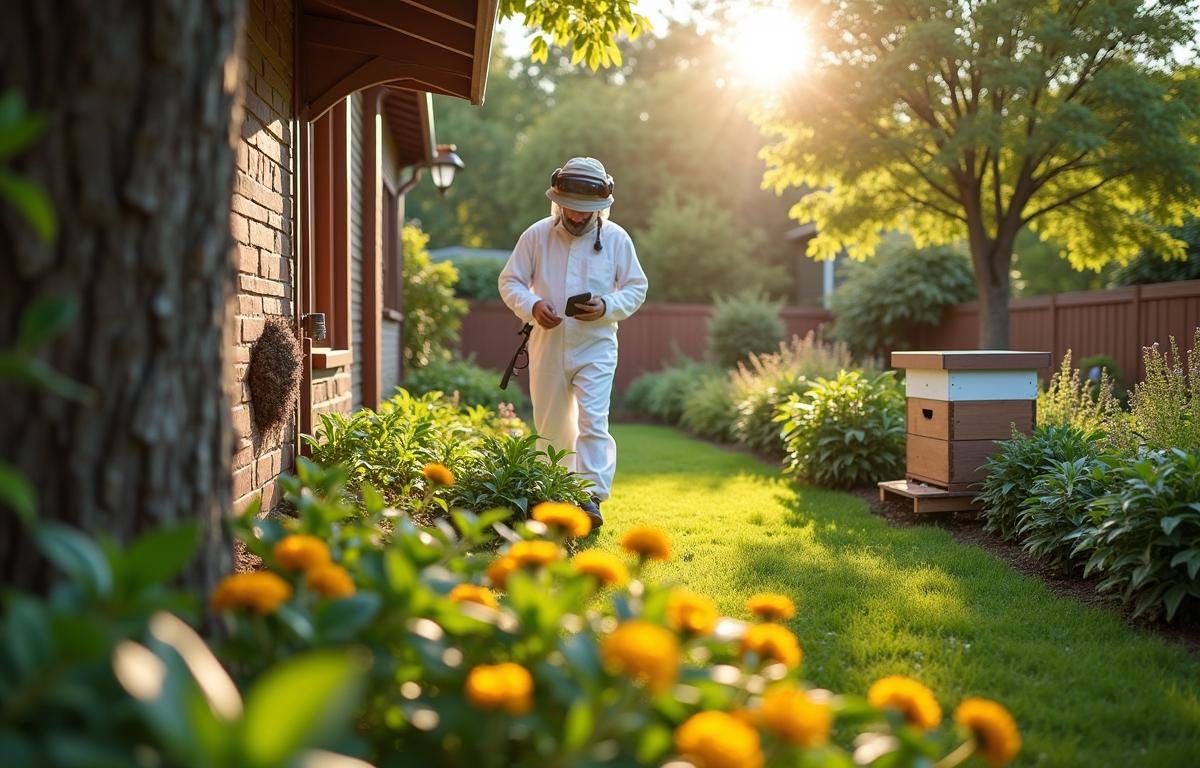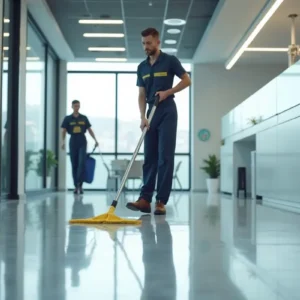Handling these insects can seem overwhelming while ensuring a healthy environment is maintained. Many people worry about potential stings and property damage, but it’s also critical to protect these pollinators and preserve the delicate balance of nature.
They play a vital role in supporting our ecosystems, so focusing on wildlife removal and pest management tactics that prioritize pollinator protection is key. When done correctly, you can implement wasp control and bee prevention strategies that keep everyone safe, including the insects you might be trying to deter.
Contents
The Importance of Wasp Control and Bee Prevention
Many homeowners see wasps and bees hovering near windows or in gardens and feel immediate concern. Although these insects can sometimes be a nuisance, wasp prevention and bee prevention allow you to keep your home comfortable without resorting to harsh measures.
Making small changes to your property also reduces the likelihood of an infestation. Insect repellent options that are natural or low-impact can deter populations from settling, while still preserving a clean environment.
Identifying Wasp Nests and Bee Hives
Wasp nests and bee hives often appear in hidden locations that provide cover and protection. You might find them tucked under eaves, in tree branches, or even inside wall voids.
Telltale Signs of Nesting
Watch for increased buzzing in a particular corner of your property or holes in the ground where certain wasps prefer to burrow. If you notice a funnel of insects entering a specific spot, you may need pest removal techniques that focus on safe wasp nest removal or bee hive relocation. Early identification can spare you and these beneficial insects from an unwanted clash.
Eco-Friendly Pest Management Methods
Opting for environmentally friendly pest control is an excellent way to balance your own comfort and the safety of local pollinators. Simple actions, such as sealing cracks and maintaining screens on windows, discourage wasps and bees from taking up residence.
Plant choices also matter. Bee-friendly gardening helps maintain pollinator populations, while certain herbs like mint and basil may serve as natural wasp deterrents when strategically placed. You get the dual benefit of fresh herbs while also practicing sustainable pest management.
Chemical-Free Wasp Removal Tactics
Chemical-free wasp removal relies on approaches that steer these insects toward natural relocation rather than killing them. Some pest control professionals specialize in humane bee relocation methods that can also be adapted for wasps. This keeps pollinator populations thriving in more appropriate habitats while you remain sting-free.
Protecting Honeybee Safety with Insect Repellent Alternatives
Honeybee safety becomes an even bigger concern when you see boxes of these insects at local apiaries or in a well-managed urban beekeeping setup. Traditional pesticides can be devastating for honeybees, which are essential pollinators for our gardens and crops.
Trying out natural insect repellent options like citronella or peppermint oil can deter wasps and bees without posing a threat to their long-term health. These substances typically have a milder environmental impact, ensuring your pollinator protection plans remain intact.
Encouraging Pollinator Protection in Your Yard
Turn your yard into a haven for beneficial insects by adding a variety of native blooms. This promotes wild bee habitat preservation and provides a stable food source. Additionally, consistent insect habitat management keeps wasps and bees from nesting in unwanted spaces, as they tend to choose areas that are undisturbed and well-suited to their needs.
Seasonal Pest Issues and Sting Prevention
Warm weather often brings an uptick in outdoor pest solutions you might need as wasps build their nests quickly. In early spring, focus on wasp and bee coexistence by removing fallen fruit, trash, and debris that lure these insects closer to your living spaces.
Sting prevention also means being aware of your own actions. Avoid sudden movements near wasps or bees, and remain calm if they land on you. Quick, frantic swatting may provoke them, but gentle motion or slight movements usually coax them away safely.
Handling an Unexpected Bee Swarm
A bee swarm can appear alarming, but it’s a sign that a colony is in transition. In these scenarios, bee swarm management is typically best left to professionals who specialize in sustainable pest management. They can relocate the swarm, ensuring the bees remain healthy and your property stays free of hazard.
Combining Bee Conservation Practices and Outdoor Pest Solutions
When trying to deter wasps and bees while respecting their role in nature, you can adopt wasp prevention strategies that revolve around non-invasive methods. Trimming back shrubs or sealing access points around your home significantly lowers the odds of another colony building there. Meanwhile, placing decoy nests can discourage wasps, since they usually avoid building near another established home.
Urban beekeeping tips often emphasize strategic hive placement and routine monitoring. Bee hive relocation helps crystallize the idea that these insects can remain part of your local ecosystem without interfering with daily life. Encouraging a symbiotic relationship lets you appreciate stinging insect safety through measured actions rather than aggressive extermination.
Staying mindful of local pollinators encourages better decisions for both your household and the environment. Every effort you make to preserve bee colonies, practice wasp control methods responsibly, and respect wasp and bee behavior drives the broader mission of pollinator protection and fosters a stronger, healthier environment for everyone.





